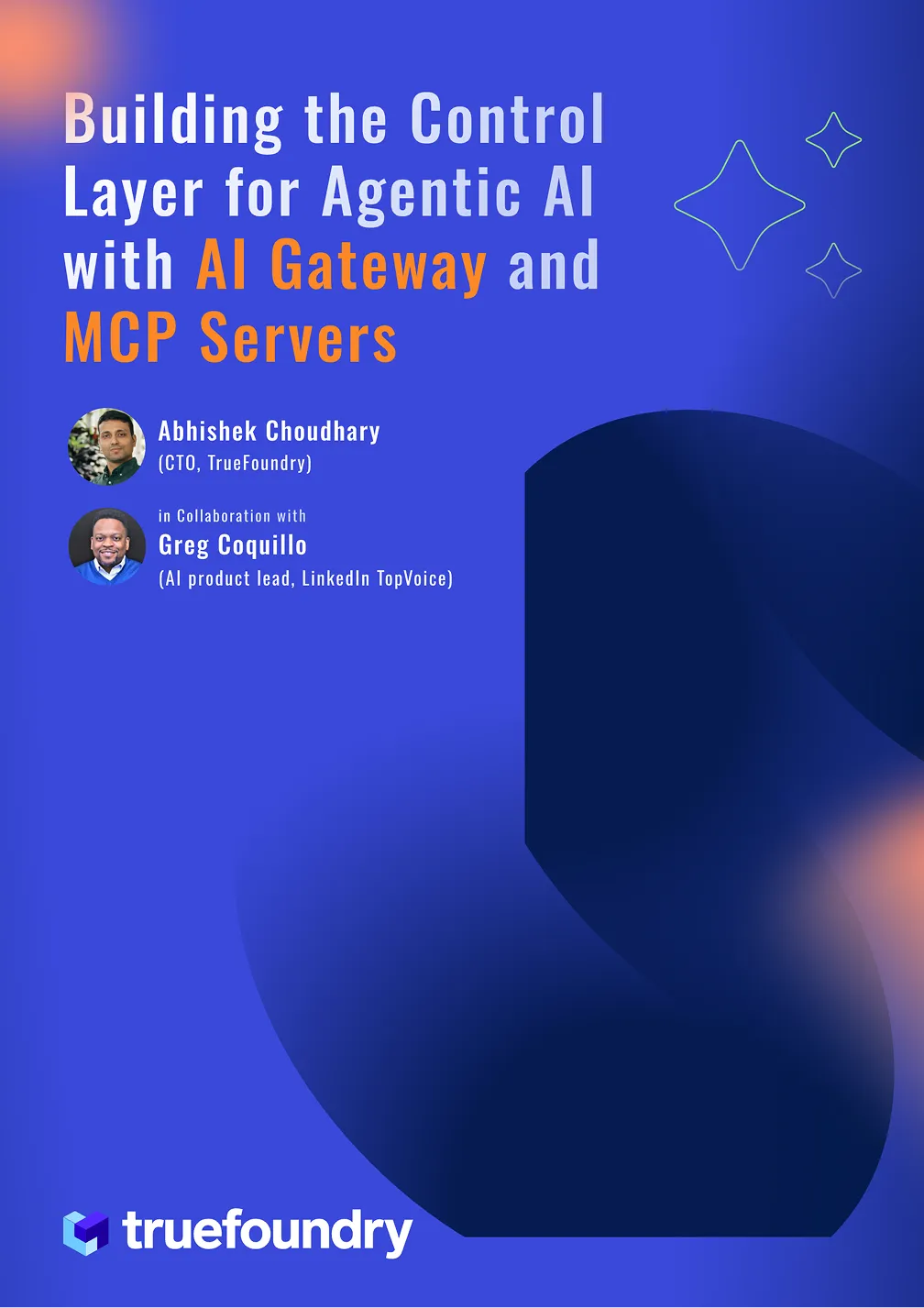The Rise of AI Gateways: Why the Next Phase of AI Is About Control
Over the past year, enterprise AI has exploded from small experiments to company-wide adoption.
Finance runs copilots. Marketing builds chatbots. Operations uses generative models for forecasts.
It feels like progress—until you zoom out.
Behind the innovation, chaos is quietly building.
Every team spins up its own stack, its own models, its own API keys. Costs rise. Security weakens. Nobody has a single view of what’s happening across the organization.
Then a provider goes down. Copilots stall, chatbots freeze, and dashboards stop updating. At that moment, innovation stops being exciting—it starts being brittle.
That’s when CIOs realize: AI doesn’t just need smarter models. It needs structure, governance, and guardrails.
Gartner Captures the Shift
In its Market Guide for AI Gateways (October 2025, ID G00839683), Gartner put a name to this new layer: the AI Gateway.
According to Gartner,
“AI Gateways act as the intermediary control point between applications and AI services, centralizing security, governance, and observability.”
In other words, the gateway is the brain stem of enterprise AI—it decides how traffic flows between systems, enforces rules, and ensures visibility into what’s happening.
Gartner predicts that by 2028, more than 70% of software teams building multimodel applications will use an AI Gateway, compared to roughly 10% today.
That’s not a trend; it’s the foundation of the next generation of enterprise AI infrastructure.
When Innovation Outruns Oversight
As AI spreads across the enterprise, the same pain points surface again and again. Credentials live in too many places. Prompts carry sensitive data with no redaction. Teams duplicate workloads because there’s no shared visibility. Costs surge without anyone realizing where the tokens are going.
And when a provider experiences downtime, critical processes grind to a halt—as seen during the October 2025 AWS outage that disrupted major global services relying on a single cloud region.
The problem isn’t the models—it’s everything around them.
Enterprises need a way to standardize access, track usage, manage costs, and stay compliant across the ever-growing family of agents, models, and LLMs.
That’s the role of the AI Gateway.
A Market Dividing in Two
The Gartner Market Guide shows a clear split in how organizations are approaching this.
Some lean toward open-core or open-source gateways—tools that offer flexibility and developer freedom but demand more effort to secure, scale, and monitor.
Others are choosing enterprise-grade gateways, where observability, governance, and cost management come built in, ready for production.
Both approaches have merit.
But as AI becomes mission-critical, most enterprises are moving toward reliable control planes that help with effective cost management and treat governance as part of the architecture—not an afterthought.
Building the Control Plane for Enterprise AI
Across industries, a pattern is emerging. Companies are realizing they don’t just need model providers—they need a way to orchestrate, observe, and govern how AI is used internally.
That’s the direction TrueFoundry has been building toward from day one: a unified platform where routing, observability, and governance aren’t extra features—they’re embedded into the fabric of AI operations.
Under the hood, this looks like a single OpenAI-compatible API that connects multiple providers, routing requests to the best model automatically. It allows real-time visibility into latency and token spend, so finance teams can plan budgets as confidently as developers deploy code. It’s load balancing, failover, and caching that keep services stable even when vendors falter.
And because enterprises operate under strict compliance regimes, it’s built with SSO, scoped keys, and secret-manager integration—all deployable on cloud, hybrid, or on-premise environments.
This is what the new control layer for AI looks like: reliable, observable, and built to scale.
Defining the Enterprise-Ready AI Gateway
In its Market Guide, Gartner outlined the capabilities that separate experimental tools from production-grade gateways.
Enterprises, it says, should look for centralized key management and policy enforcement to align with AI trust and security frameworks. They should demand cost visibility down to the token, with quotas, rate limits, and caching to prevent budget shocks. They need routing and failover that keep systems running even when providers stumble. They must have end-to-end observability for latency, error rates, and compliance audits. And they should integrate access control—SSO, OAuth, RBAC—into the same layer that manages the models.
That’s the foundation Gartner recommends for an enterprise-ready AI Gateway.
But as adoption accelerates, the bar is already rising. Enterprises aren’t just looking for control—they want intelligence built into that control layer. They want gateways that can reason about cost, performance, and policy automatically. They want semantic caching, multi-modal routing, and native support for emerging standards like MCP (Model Context Protocol) to manage multi-agent systems securely.
That’s the layer of capability that TrueFoundry is already helping enterprises successfully deploy and manage in production.
We took Gartner’s framework as a starting point—and extended it into a practical, next-generation view of what enterprise AI operations should look like.
Explore the AI Gateway Evaluation Checklist:
AI Gateway Evaluation Checklist.
It’s a self-assessment tool that goes beyond Gartner’s criteria—helping teams measure not only readiness, but maturity. It shows where governance, observability, and reliability are strong, and where the next investments should go.
Riding the Curve Gartner Describes
AI’s next chapter isn’t about building bigger models; it’s about building smarter infrastructure.
Gartner’s Market Guide makes that clear: the future belongs to companies that can keep AI secure, observable, and affordable as it grows.
TrueFoundry was built for that exact reality—a world where AI is no longer experimental, but essential.
The enterprises investing in gateways and control planes today are the ones preparing to lead tomorrow’s AI-driven economy.
Explore Gartner’s full Market Guide for AI Gateways (October 2025, ID G00839683) to understand how enterprises are redefining AI control layers for governance, security, and reliability.
Built for Speed: ~10ms Latency, Even Under Load
Blazingly fast way to build, track and deploy your models!
- Handles 350+ RPS on just 1 vCPU — no tuning needed
- Production-ready with full enterprise support
TrueFoundry AI Gateway delivers ~3–4 ms latency, handles 350+ RPS on 1 vCPU, scales horizontally with ease, and is production-ready, while LiteLLM suffers from high latency, struggles beyond moderate RPS, lacks built-in scaling, and is best for light or prototype workloads.









.jpg)
















